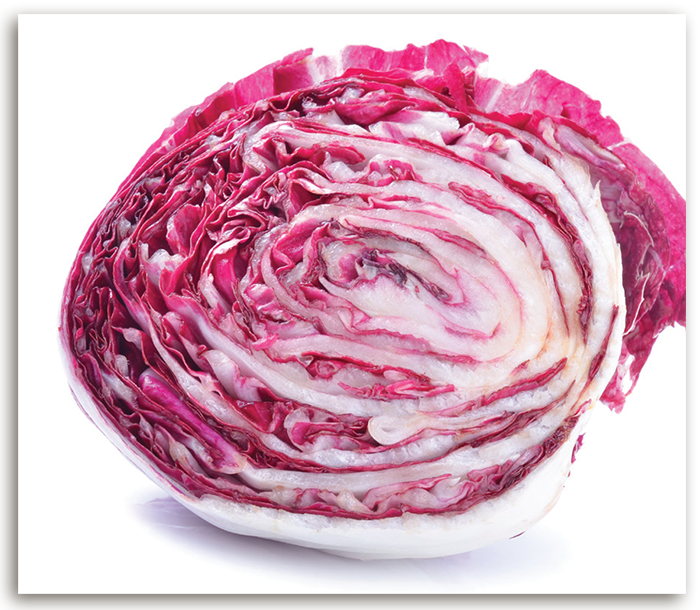FoodMASTER Middle: Vegetables
Students will learn the concept of pH, and the impact of acids and bases on plant pigments, explore the impact of acids and bases on plant cell structure, and discover the health benefits of consuming vegetables.

Background
Lesson Activities
Recommended Companion Resources
Credits
Author
FoodMASTER
Acknowledgements
This lesson was partnered with East Carolina University. The FoodMASTER program was supported by the Science Education Partnership Award (SEPA) which is funded from the National Center for Research Resources, a component of the National Institutes of Health.
- Primary Authors:
- Virginia Stage, PhD, RDN, LDN
- Mary White
- Ashley Roseno, MAEd, MS, RDN, LDN
- Melani W. Duffrin, PhD, RDN, LDN
- Graphic Design: Cara Cairns Design, LLC
Sources
- http://www.lifehack.org/articles/lifestyle/20-incredible-facts-about-eating-fruits-and-vegetables-that-you-probably-didnt-know.html
- https://www.quora.com/What-are-some-interesting-facts-about-vegetables
Standards
Indiana Content Area Standards
-
English Language Arts.Grade 6.RN.1
Read a variety of nonfiction within a range of complexity appropriate for grades 6-8. By the end of grade 6, students interact with texts proficiently and independently at the low end of the range and with scaffolding as needed at the high end of the range.
- Key Ideas and Textual Support.6.RN.2.1: Analyze what a text says explicitly as well as draw inferences from the text through citing textual evidence.
- Key Ideas and Textual Support.6.RN.2.3: Analyze in detail how a key individual, event, or idea is introduced, illustrated, and elaborated in a text (e.g., through examples or anecdotes).
-
English Language Arts.Grade 6.W.1
Write routinely over a variety of time frames for a range of tasks, purposes, and audiences; apply reading standards to support analysis, reflection, and research by drawing evidence from literature and nonfiction texts.
- The Research Process: Finding, Synthesizing, and Reporting Information.6.W.5: Conduct short research assignments and tasks to build knowledge about the research process and the topic under study. a. Formulate a research question (e.g., In what ways did Madame Walker influence Indiana society?). b. Gather relevant information from multiple sources, and annotate sources. c. Assess the credibility of each source. d. Quote or paraphrase the information and conclusions of others. e. Avoid plagiarism and provide basic bibliographic information for sources. f. Present information, choosing from a variety of formats.
- Writing Genres: Argumentative, Informative, and Narrative.6.W.3.2: Write informative compositions in a variety of forms that a. Introduce a topic; organize ideas, concepts, and information, using strategies such as definition and classification. b. Develop the topic with relevant facts, definitions, concrete details, quotations, or other information and examples from various sources and texts. c. Use appropriate transitions to clarify the relationships among ideas and concepts. d. Include formatting (e.g., headings), graphics (e.g., charts, tables), and multimedia when useful to aiding comprehension. e. Choose language and content specific vocabulary that express ideas precisely and concisely, recognizing and eliminating wordiness and redundancy. f. Establish and maintain a style appropriate to purpose and audience. g. Provide a concluding statement or section that follows from the information or explanation presented.
-
English Language Arts.Grade 6.SL.1
Listen actively and adjust the use of spoken language (e.g., conventions, style, vocabulary) to communicate effectively with a variety of audiences and for different purposes.
- Discussion and Collaboration.6.SL.2.1: Engage effectively in a range of collaborative discussions (e.g.,one-on-one, in groups, and teacher-led) on grade- appropriate topics, texts, and issues, building on others ideas and expressing personal ideas clearly.
-
English Language Arts.Grade 7.RN.1
Read a variety of nonfiction within a range of complexity appropriate for grades 6-8. By the end of grade 7, students interact with texts proficiently and independently at the middle of the range and with scaffolding as needed for texts at the high end of the range.
- Key Ideas and Textual Support.7.RN.2.1: Analyze what a text says explicitly as well as draw inferences from the text through citing several pieces of textual evidence.
- Key Ideas and Textual Support.7.RN.2.3: Analyze the interactions between individuals, events, and ideas in a text (e.g., how ideas influence individuals or events, or how individuals influence ideas or events).
-
English Language Arts.Grade 7.W.1
Write routinely over a variety of time frames for a range of tasks, purposes, and audiences; apply reading standards to support analysis, reflection, and research by drawing evidence from literature and nonfiction texts.
- The Research Process: Finding, Synthesizing, and Reporting Information.7.W.5: Conduct short research assignments and tasks to build knowledge about the research process and the topic under study. a. Formulatearesearchquestion. b. Gather relevant information from multiple sources, using search terms effectively, and annotate sources. c. Assess the credibility and accuracy of each source. d. Quote or paraphrase the information and conclusions of others. e. Avoid plagiarism and follow a standard format for citation. f. Present information, choosing from a variety of formats.
- Writing Genres: Argumentative, Informative, and Narrative.7.W.3.2: Write informative compositions in a variety of forms that a. Introduce a topic clearly, previewing what is to follow; organize ideas, concepts, and information, using strategies such as definition and classification; include formatting (e.g., headings), graphics (e.g., charts, tables), and multimedia when useful to aiding comprehension. b. Develop the topic with relevant facts, definitions, concrete details, quotations, or other information and examples from various sources and texts. c. Use appropriate transitions to create cohesion and clarify the relationships among ideas and concepts. d. Choose language and content-specific vocabulary that express ideas precisely and concisely, recognizing and eliminating wordiness and redundancy. e. Establishandmaintainastyleappropriatetopurposeandaudience. f. Provide a concluding statement or section that follows from and supports the information or explanation presented.
-
English Language Arts.Grade 7.SL.1
Listen actively and adjust the use of spoken language (e.g., conventions, style, vocabulary) to communicate effectively with a variety of audiences and for different purposes.
- Discussion and Collaboration.7.SL.2.1: Engage effectively in a range of collaborative discussions (e.g., one-on-one, in groups, and teacher-led) on grade- appropriate topics, texts, and issues, building on others ideas and expressing personal ideas clearly.
-
English Language Arts.Grade 8.RN.1
Read a variety of nonfiction within a range of complexity appropriate for grades 6-8. By the end of grade 8, students interact with texts proficiently and independently.
- Key Ideas and Textual Support.8.RN.2.1: Analyze what a text says explicitly as well as draw inferences from the text through strong and supportive textual evidence.
- Key Ideas and Textual Support.8.RN.2.3: Analyze how a text makes connections and distinctions among individuals, events, and ideas.
-
English Language Arts.Grade 8.W.1
Write routinely over a variety of time frames for a range of tasks, purposes, and audiences; apply reading standards to support analysis, reflection, and research by drawing evidence from literature and nonfiction texts.
- The Research Process: Finding, Assessing, Synthesizing, and Reporting Information.8.W.5: Conduct short research assignments and tasks to build knowledge about the research process and the topic under study. a. Formulatearesearchquestion. b. Gather relevant information from multiple sources, using search terms effectively, and annotate sources. c. Assess the credibility and accuracy of each source. d. Quote or paraphrase the information and conclusions of others. e. Avoid plagiarism and follow a standard format for citation. f. Present information, choosing from a variety of formats.
- Writing Genres: Argumentative, Informative, and Narrative.8.W.3.2: Write informative compositions in a variety of forms that a. Introduce a topic clearly, previewing what is to follow; organize ideas, concepts, and information into broader categories; include formatting (e.g., headings), graphics (e.g., charts, tables), and multimedia when useful to aiding comprehension. b. Develop the topic with relevant, well-chosen facts, definitions, concrete details, quotations, or other information and examples from various sources and texts. c. Use appropriate and varied transitions to create cohesion and clarify the relationships among ideas and concepts. d. Choose language and content-specific vocabulary that express ideas precisely and concisely, recognizing and eliminating wordiness and redundancy. e. Establishandmaintainastyleappropriatetothepurposeandaudience. f. Provide a concluding statement or section that follows from and supports the information or explanation presented.
-
English Language Arts.Grade 8.SL.1
Listen actively and adjust the use of spoken language (e.g., conventions, style, vocabulary) to communicate effectively with a variety of audiences and for different purposes.
- Discussion and Collaboration.8.SL.2.1: Engage effectively in a range of collaborative discussions (e.g., one-on-one, in groups, and teacher-led) on grade- appropriate topics, texts, and issues, building on others ideas and expressing personal ideas clearly.
